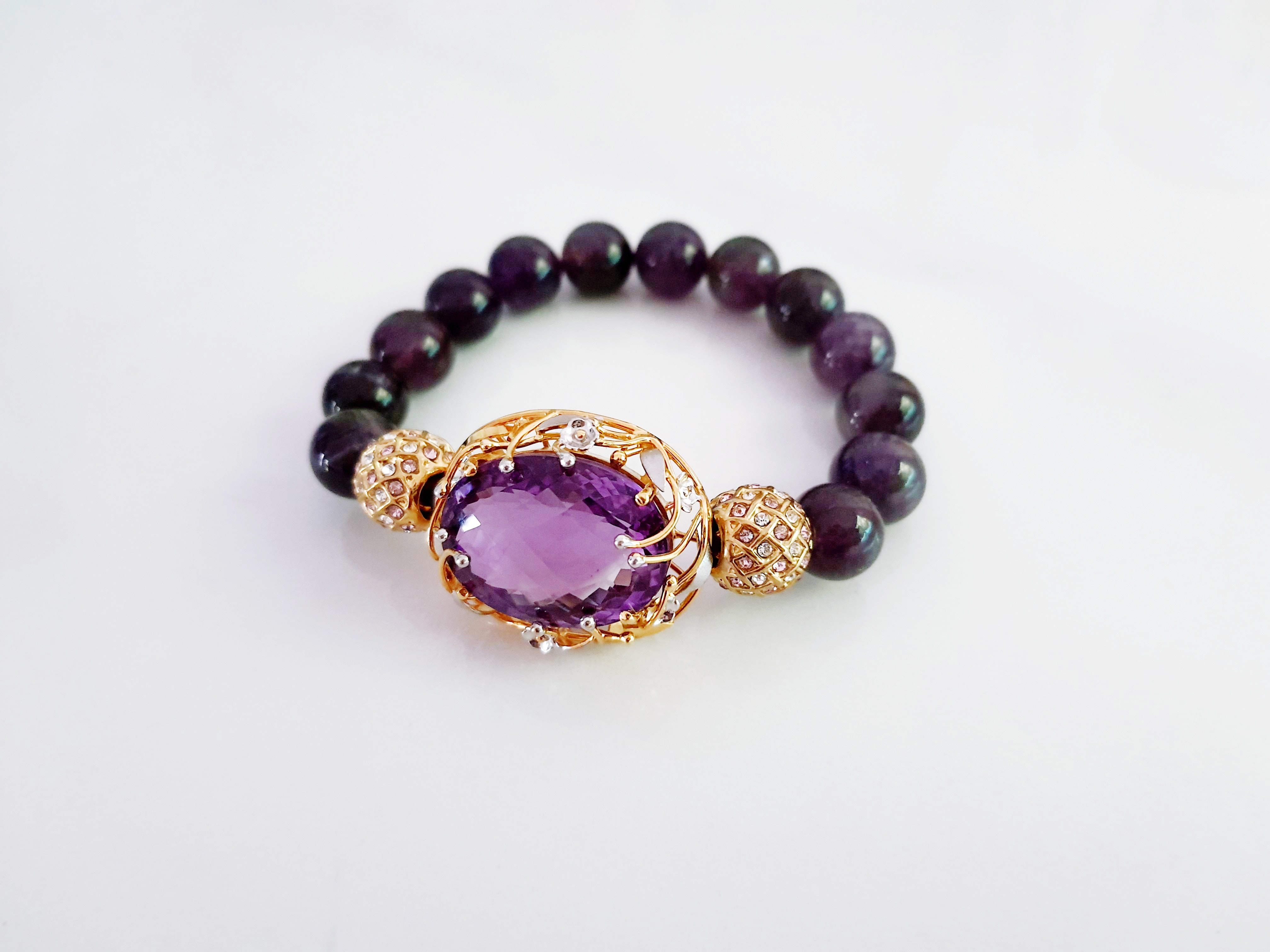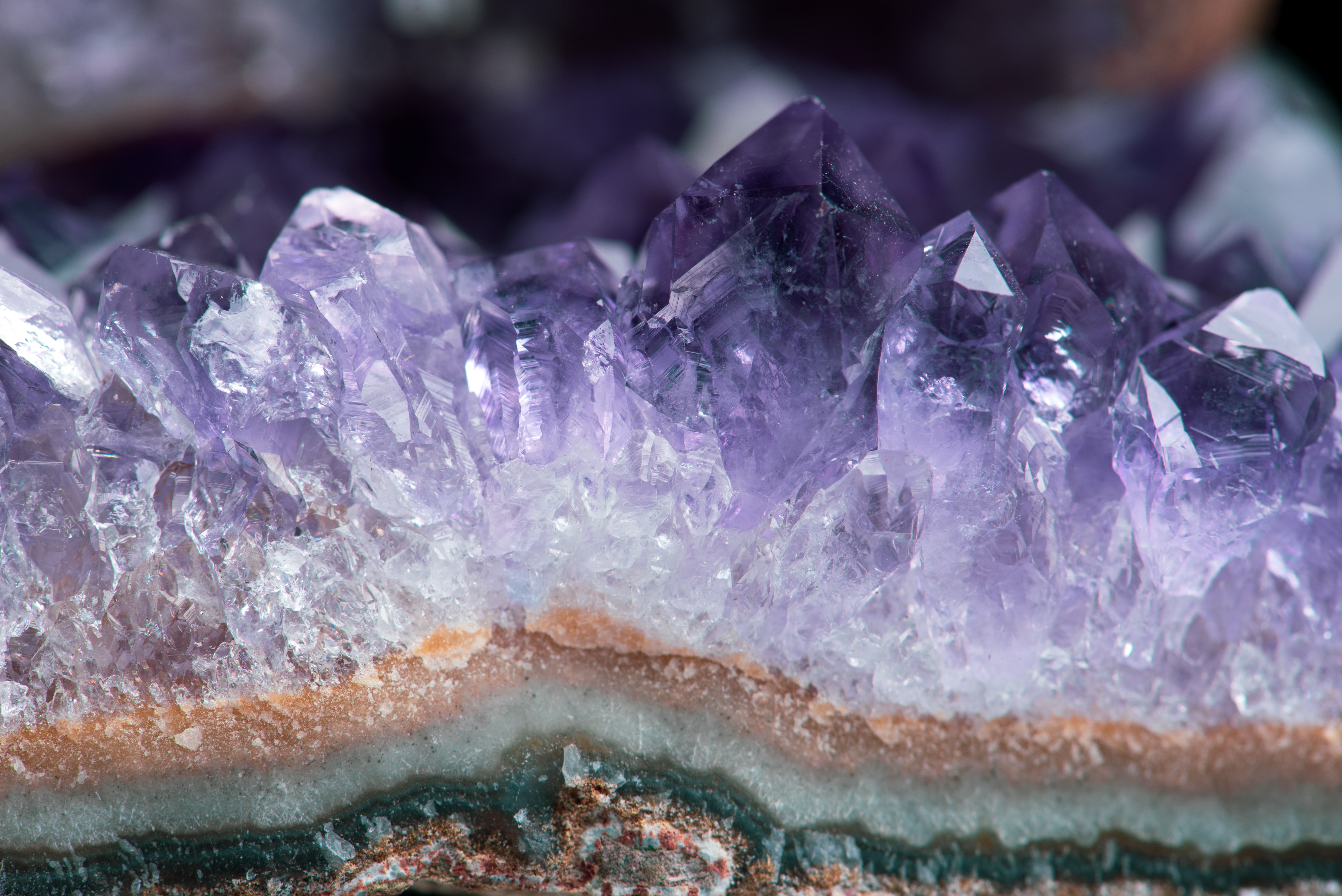
Amethyst is the purple variety of the quartz mineral. It is classified as a semi-precious stone, and usually forms as a crystal lining within basalt rock. The word ‘amethyst’ comes from the Greek word amethystos, referring to the belief that this gemstone protects its owner from drunkenness.
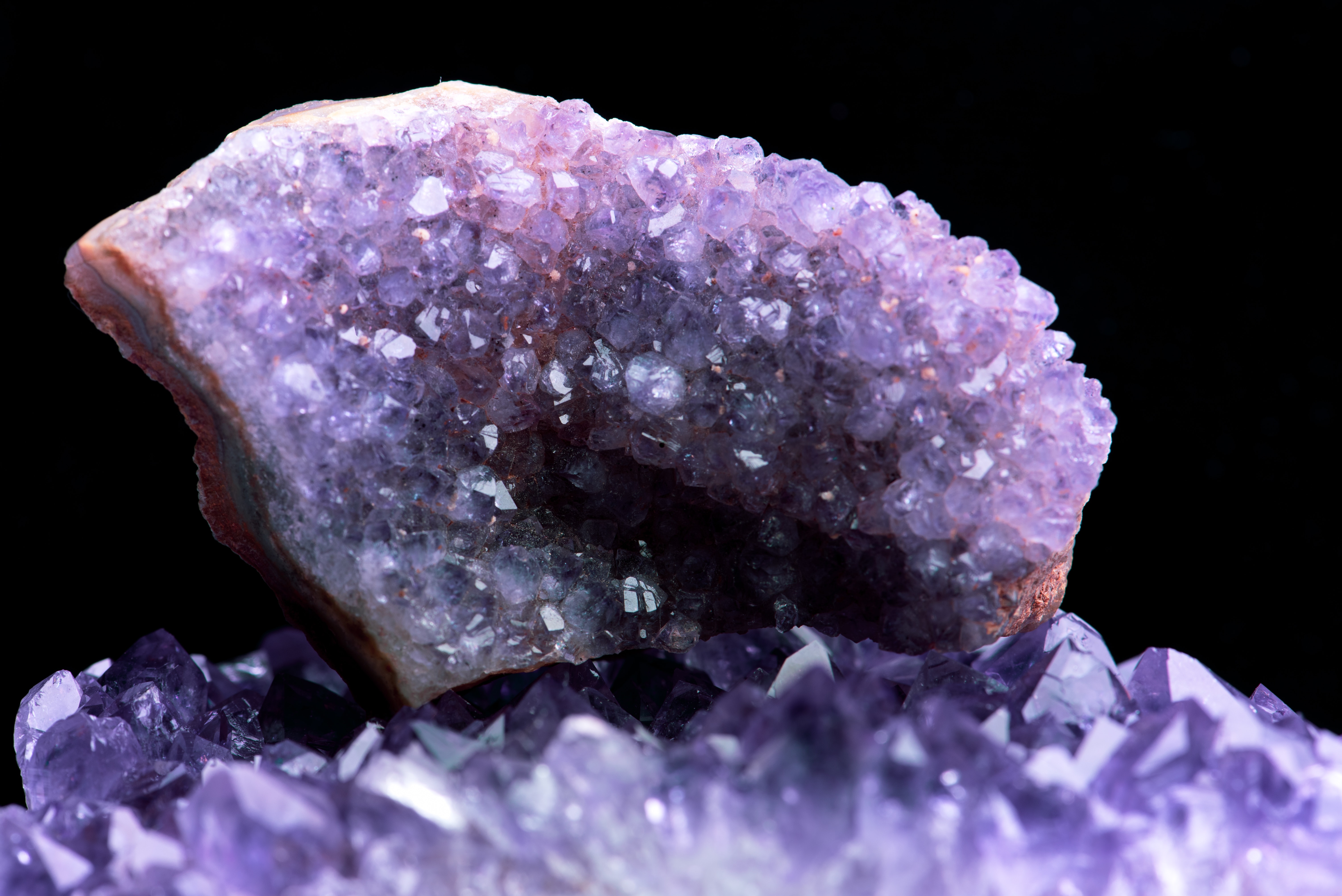
A quick guide to amethyst
|
Specification |
Details |
|
Most Valuable Color |
Deep reddish-purple / deep purple |
|
Most Popular Cut |
Round / brilliant |
|
Hardness |
7 on Mohs Hardness |
Where is amethyst found?
Amethyst can be found worldwide, with the largest deposits in South and North America and Africa. The largest producing region is Brazil, producing two to three thousand tons per year. Uruguay produces less amethyst than neighboring Brazil, but many consider the clarity and darker color to be superior to that of the Brazilian amethyst. Much fine amethyst also comes from Russia, especially in the Mursinka region, where it occurs in cavities in granitic rocks.
In the 1950s, deposits of amethyst were discovered in Zambia. Zambian amethyst has a medium dark purple with dark blue zones which add a depth to the color. In addition, amethyst with an unusual purple-pinkish color was found in Vietnam.
Top exporters of Amethyst include:
- Brazil
- Uruguay
- Madagascar
- South Korea
- Russia
Physical properties
Amethyst contains silicon dioxide (SiO2) as its primary chemical composition, like other varieties of quartz. The purple color in amethyst is due to the presence of iron and aluminum within the crystal lattice. The color typically ranges from a very light purple to deep purple, and it can also contain shades of lavender or even reddish purple. This depends on the combination of minerals present in the clear quartz. Its crystal structure belongs to the hexagonal crystal system and forms as six-sided prisms.

Purple shades of amethyst
Amethyst is the gem that’s most commonly associated with the color purple. Its purple color can be light and bluish, and can have a reddish-purple tinge. When the stone has a light purple color it is sometimes called “raspberry.” Its purple color can also range from a light purple to a deep purple, and from brownish to vivid.
The most valuable amethysts have a deep, rich purple with strong reddish purple hues. Due to its deep purple coloration, the vivid and intense hue is often referred to as “Siberian” or Royal amethyst.
Another popular color of amethyst is a light shade of purple, which is known as “Rose de France”. Rose de France amethysts are mostly found in Brazil but can also be located in Bolivia and Zambia.
Green amethyst & the Federal Trade Commission
A common misconception exists that amethyst can also be found in the color green. However, the true name for green amethyst is prasiolite - the green variety of the quartz mineral. In an effort to protect consumers from misrepresentation, the Federal Trade Commission initiated a consumer research exercise (link to article) to establish if there was confusion in consumers' minds. The Jewelers Vigilance Committee commissioned Harris Interactive to conduct the research and the outcome was a Federal recommendation to not use Green Amethyst, and for this reason Loupe does not present the option of Green Amethyst in our data-set. (source).
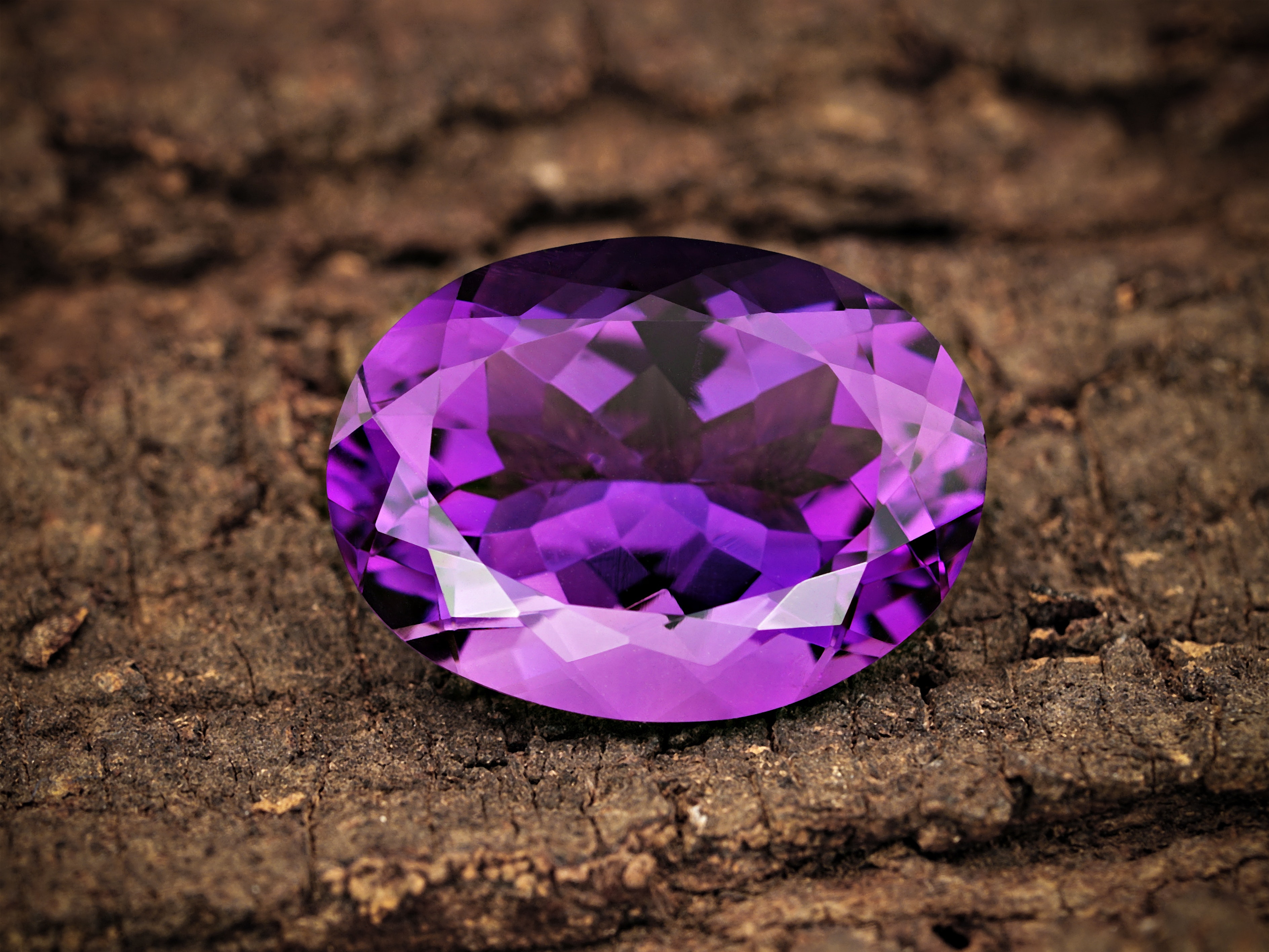
Best cuts & notes on durability
Amethyst is often formed in long prismatic crystals. As its color can often appear banded, it is usually cut into a round shape which helps display a more uniformed color when viewed from the top.
Amethyst is considered a hard stone, with a Mohs scale hardness of 7. It is one-fifteenth of the hardness of diamond. Amethysts are durable, making it ideally suitable for use in all kinds of jewelry.
Due to its hardness, amethyst can be cut in a variety of shapes and styles such as rounds, marquises, cushions, ovals, and more, making it all the more versatile. Amethyst can also be cut into freeform shapes. Amethyst cutting can be done by hand or machine.
History & legend surrounding amethyst
It is unclear how long amethyst has existed, but it was first discovered in France, about 25,000 years ago. The amethyst of the ancient world was probably mined in Sri Lanka, with small deposits found in Europe. In the 18th century, the amethyst was found in Russia in the Ural mountains and is considered the “classic” amethyst source, known as “ Siberian” amethyst. Siberian amethyst was said to be exceptionally fine with dark purple and rose colored flashes.
Amethyst is the name given to purple colored Quartz. It is believed that this stone’s name is derived from the ancient Greek word amethystos, which translates to “not intoxicated” or “sober”. Because of its wine-like color, one of the Greek legends tells the tale of a young and beautiful girl named Amethystos and Dionysus, the god of wine. The legend said Dionysus let loose fierce tigers while Amethystos was on her way to pray to the goddess Diana. Diana wanted to protect her so she turned her into a statue of pure crystalline Quartz to protect her from the advancing tigers. Humbled by Amethystos’ resolution, and horrified at what he had almost done to her, Dionysus wept tears of wine. Legend says his tears turned the colorless Quartz purple, thus creating Amethyst.
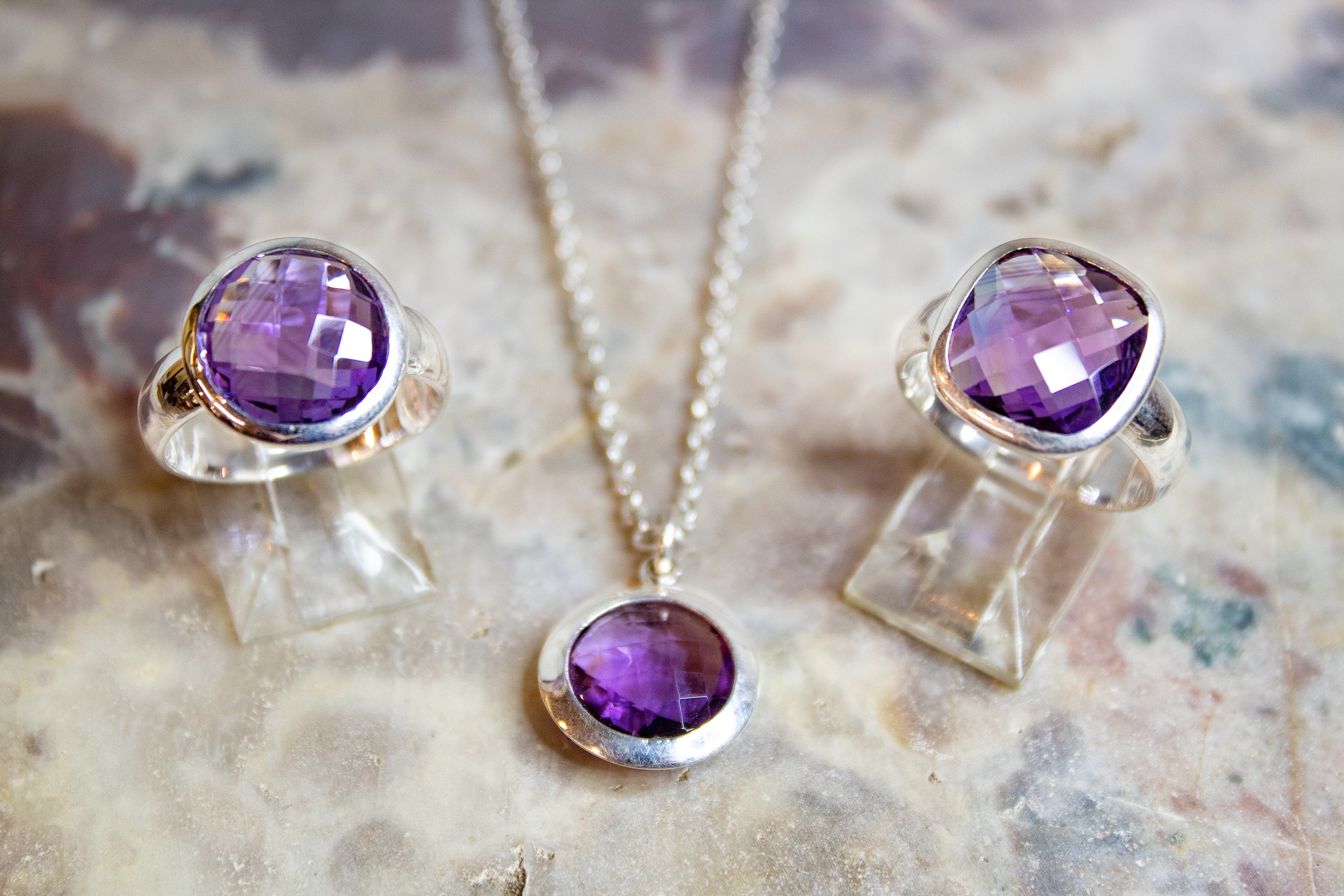
Amethyst jewelry trends over time
Amethyst is a popular gemstone that has been used in jewelry for centuries, but there has been a trend towards incorporating amethyst into modern jewelry designs in recent years.
One trend in amethyst jewelry is to use the gemstone as a centerpiece in larger statement pieces, such as cocktail rings or bold necklaces. Amethyst's rich purple color is a standout choice in these pieces and can be combined with other gemstones or metals for added visual interest.
Another trend is to use amethyst in more delicate and minimalistic designs. These pieces may use small amethyst stones as accents in earrings or bracelets or feature a single amethyst stone as the focal point of a simple pendant necklace. These designs are often more affordable and can be worn every day as a subtle pop of color.
In addition, there has been a growing interest in sustainable and ethically sourced gemstones, including amethyst. Many jewelers are now sourcing amethyst from responsible mines and using recycled metals in their designs, making amethyst jewelry a more socially and environmentally conscious choice.
